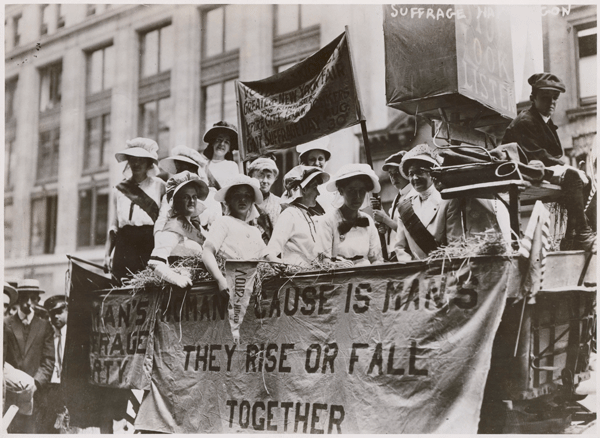
How ‘Suffragents’ Helped Women Get the Vote
By James Worsham | National Archives News
WASHINGTON, November 14, 2019 —The drive for women's suffrage in the early 20th century got a big boost from men who were sympathetic to the cause—“suffragents”—a panel of authors told an audience at the National Archives recently.
These men, said Johanna Newman, author of Gilded Suffragists: The New York Socialites who Fought for Women's Right to Vote, “gave a burst of energy to the [suffrage] movement.”
Newman and other guests recounted the years in the first decade or so of the 20th century, when some men were willing to go public with their support of the drive to give women the vote. That drive was successful in 1920, when the 19th Amendment was ratified and became part of the U.S. Constitution.
But men who joined the cause early on also faced ridicule from other men. “It disrupted the gender role expectation that men had,” Newman said.
Those men who gave their open support to the woman suffrage movement were made fun of by other men, with chants like "Who's going to take care of the baby?"
The cause for woman suffrage was aided by the formation of the Men’s League for Women’s Suffrage in 1907—giving men an organization to rally around in their support of suffrage.
More men came to the suffrage movement in the years around 1908, when there was a “quickening of suffrage activities,” said Susan Ware, author of Why They Marched: Untold Stories of the Women Who Fought for the Right to Vote, and the issue “burst out into the public” instead of just being a topic in lecture halls.
Brooke Kroeger, author of The Suffragents: How Women Used Men to Get the Vote, noted that men were coming in large numbers a few years later. In 1911, she said, 89 men marched in a parade in New York City in support of suffrage, a figure that grew to 1,000 by 1912.
The panel discussion “Women Suffragists and the Men Who Supported Them” was presented in partnership with the 2020 Women’s Vote Centennial Initiative, a collaboration of women-centered institutions, organizations, and scholars.
You can watch the program at the National Archives YouTube channel.
Find out about upcoming events in the National Archives online calendar.
